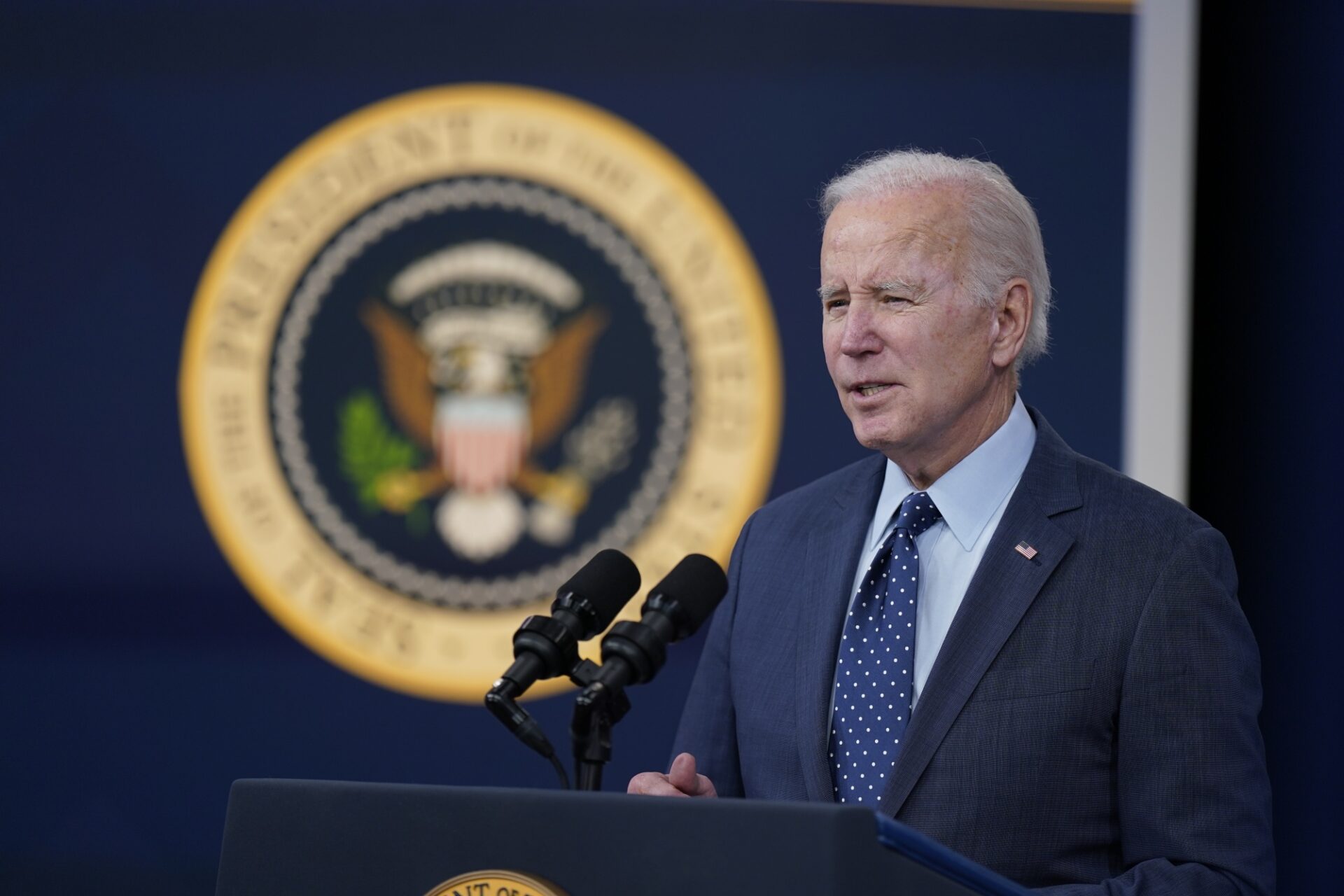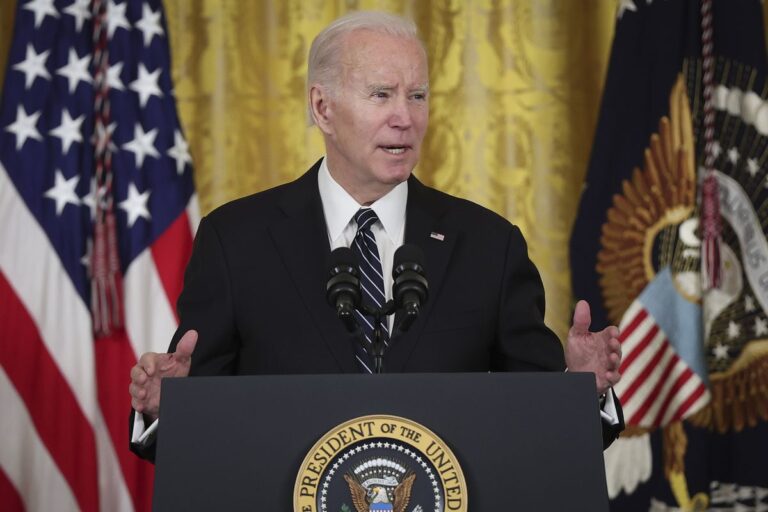Spend some time reading about how the presidential veto has fallen into disuse and you can’t help but think it coincides with an era where the filibuster and other forms of Capitol Hill obstruction have been put on steroids.
It’s an indication of how the constitutional vision of the US government – with its separation of powers – has contorted to what we have today, where very little can pass out of one branch of government and the executive is taking more and more power.
The Constitution spells out specific instructions for use of the veto as a means to separate power. The filibuster is a custom that isn’t mentioned in the Constitution, but has complete control over modern Washington and is leaving a vacuum for presidents to fill.
Still, issuing a veto is a rite of passage for every modern president, and Joe Biden is about to experience his first.
There are two issues where lawmakers from both chambers are testing Biden.
An effort to overturn Biden’s retirement investments option
The first relates to a Biden administration retirement investment rule, which according to CNN’s report, “allows managers of retirement funds to consider the impact of climate change and other environmental, social and governance factors when picking investments.”
Normally, Democrats would have used filibuster rules to block action against the rule in the Senate. But since lawmakers are looking to repeal an executive rule and not a law, Republicans were able to vote to repeal it on Wednesday with help from two red-state Democrats, Sens. Joe Manchin of West Virginia and Jon Tester of Montana. Biden is expected to veto the measure, which was passed by the House on Tuesday.
It would take two-thirds supermajorities in both chambers (usually 67 of 100 senators and 290 of 435 representatives) to override the expected veto.
Taking power from the DC city council
As for the second issue testing Biden, there had been talk that the president could veto a bill pushed by congressional Republicans to invalidate the DC city council’s effort to rewrite its criminal law. Critics argue the new law is soft on violent criminals.
But Biden told Democratic senators on Thursday that he won’t use his veto power in this case and would sign the measure to repeal DC’s new crime law. In a subsequent tweet, he noted, “I support D.C. Statehood and home-rule – but I don’t support some of the changes D.C. Council put forward over the Mayor’s objections – such as lowering penalties for carjackings.”
What a difference four years makes
Regardless, it took more than two years to get to this point, when a Republican-controlled House is testing Biden and a slim Democratic majority in the Senate is unable to protect him from pulling out his veto pen.
That it’s taken more than two years for Biden to face his first veto, after Republicans took control of the House in January, is about in line with when former President Donald Trump issued his first veto, more than two years into his presidency.
The levers of government were completely reversed back then. The Republican president was usually protected by a slim Republican majority in the Senate from legislation passed out of a House controlled by Democrats.
Few recent vetoes
The trend away from vetoes has carried through several presidents as use of the filibuster has increased.
Trump threatened to veto lots of things, but he only ended up issuing 10. Just one of those – his veto of a bill to authorize defense spending – was overridden.
Note: Read this explanation of the difference between a regular veto and a pocket veto. The latter occurs when a president simply declines to sign a bill and Congress goes into recess. But there hasn’t been one of those in more than 22 years.
Barack Obama issued 12 vetoes as president and also had one overridden. Lopsided votes in the House and Senate enacted a law allowing citizens to sue Saudi Arabia for the 9/11 attacks.
George W. Bush was more than five years into his presidency before he issued his first veto, but there was a flurry of activity in his final two years, when he, like Obama, ultimately used his veto 12 items.
Unlike Obama, Bush had four vetoes overridden, although one of those was due to a clerical issue that required him to veto (and be overridden) twice on the same farm bill. He was also overridden by lawmakers in order to avoid a slash in payments to Medicare providers.
Notable vetoes
The first veto was issued by the first president after the first census. George Washington, a Southerner, opposed Congress’ plan to reapportion congressional seats to each state by the state’s population, which would have given more seats to Northern states.
He issued the veto because the Constitution said there shouldn’t be more than one lawmaker per 30,000 people, and the plan approved by Congress included eight states exceeding that ratio. Thomas Jefferson, who encouraged the veto, according to the National Archives, ultimately devised a new plan to apportion seats based on the population as a whole.
The first master of the veto was Grover Cleveland, who cracked down on Congress’ practice of acting to individually grant pensions to people who had been rejected by the Department of Veterans Affairs.
Most presidents up to that point had issued either zero or a handful of vetoes. Cleveland, however, issued 414 vetoes during his first term. His most notable veto was to reject crop subsidies requested by Texas. Only two of his hundreds of vetoes were overridden during his first term. In total, across two terms, he issued more than 580 vetoes.
Andrew Johnson, who ascended to the presidency after Abraham Lincoln’s death, suffered the most veto overrides: 15. It makes sense since Johnson, a Southern Democrat, clashed with the Northern Republicans who controlled Capitol Hill at the time.
The fall of the veto and the rise of obstruction
The veto practice has fallen into general disuse for a number of reasons, according to Steven Smith, a political scientist at Washington University in St. Louis, who has pointed out that for starters, Congress simply doesn’t send as many bills to presidents as it used to.
Rather than congressional committees writing bills, since the mid-’90s, when then-House Speaker Newt Gingrich squared off with then-President Bill Clinton, congressional leaders have taken over much of the process. That means there’s more coordination between the White House and Capitol Hill when the same party is in control of both.
The irony of obstruction
When there is a split between the White House and Congress, the president’s allies in the Senate usually offer protection.
“Many of the partisan, controversial measures die in the Senate before they can be sent to the president for signature or veto,” Smith wrote in his newsletter in 2021. Presidents have also assumed more power from Congress, giving Congress less incentive to act.
“Every president really in the modern era, especially in the last three or four decades, has stretched the use of unilateral action,” Smith told me on the phone, noting as an example that instead of waiting for Congress, Biden has tried to enact student loan debt relief on his own. While these actions are frequently challenged in court, they are rarely completely repealed.
“And because of the gridlock on Capitol Hill, everyone has to live with that,” he said.
Congressional obstruction seems counterproductive in this way. Less legislation has meant fewer vetoes, but also more power for presidents.







